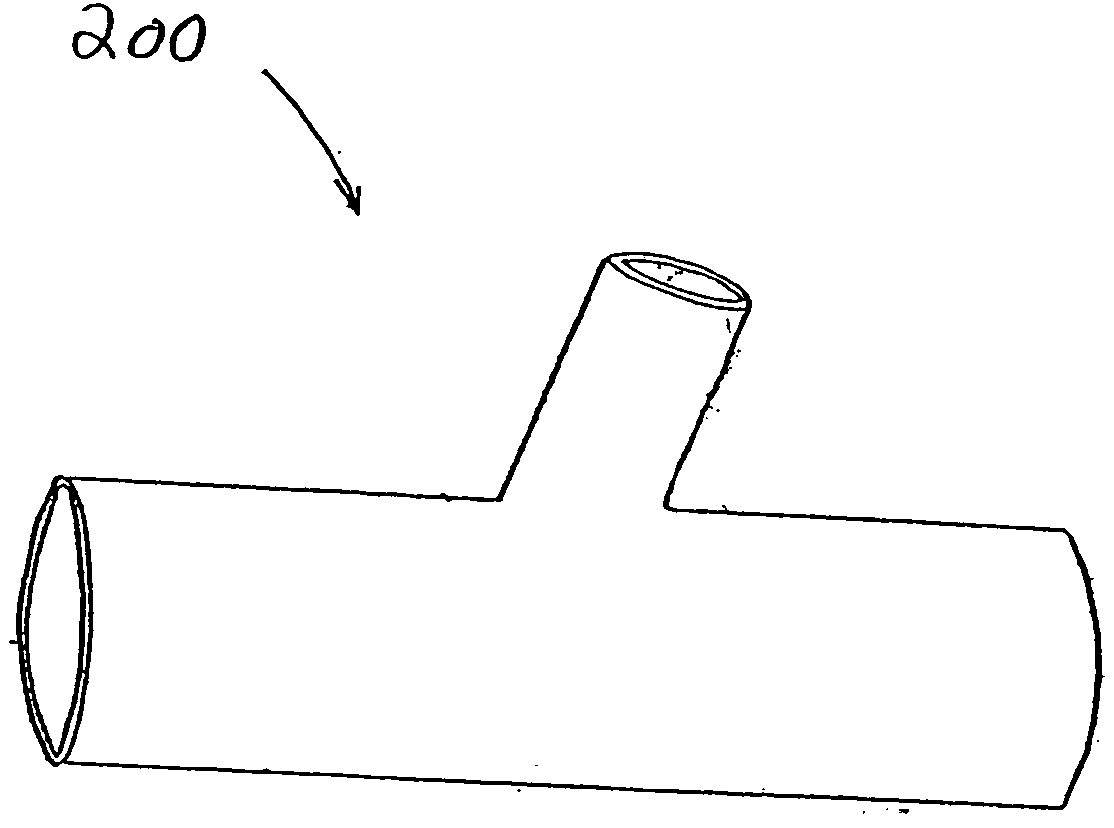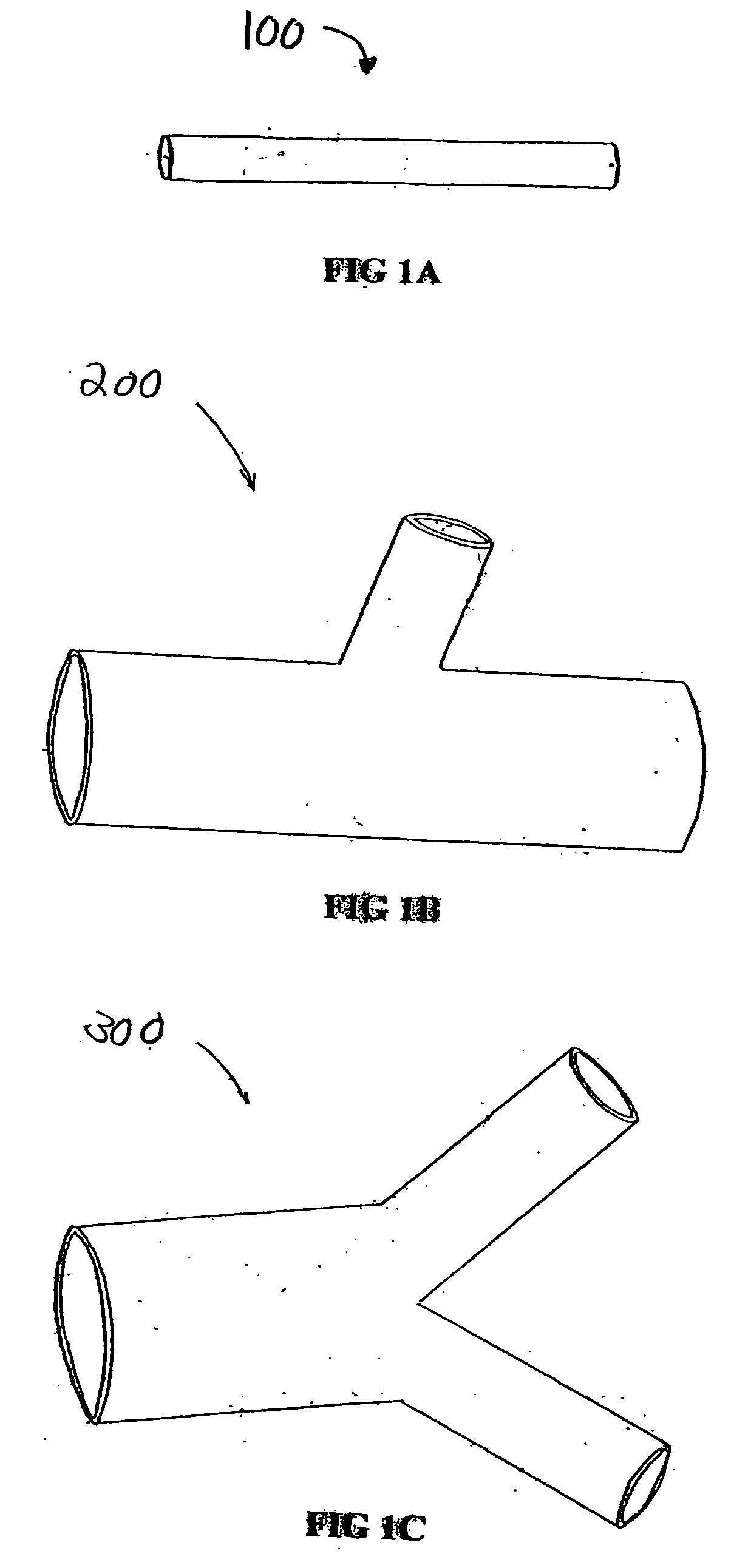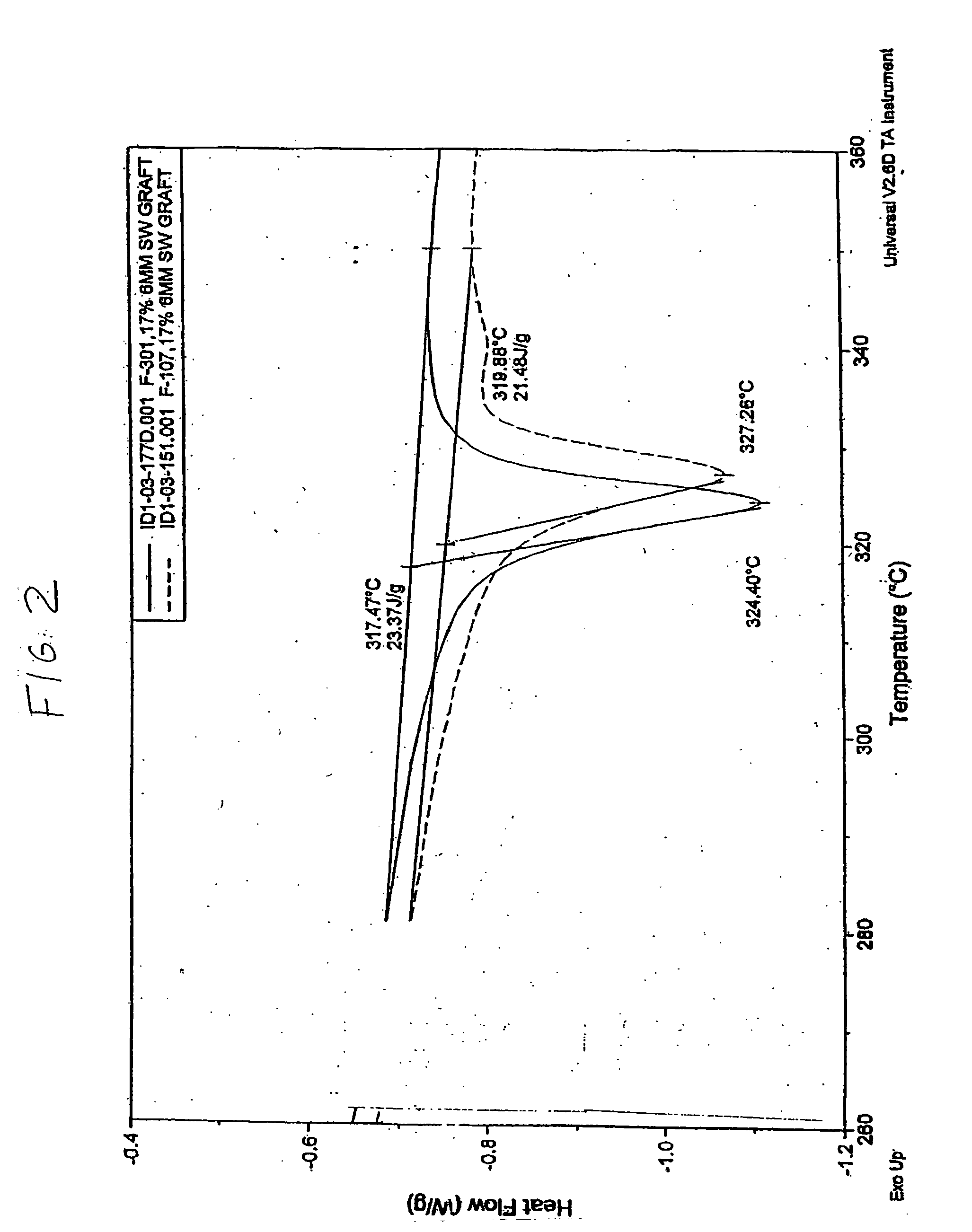Vascular graft
a vascular graft and copolymer technology, applied in the field of vascular grafts, can solve the problems of increasing patient risk and prolonging healing time, and achieve the effects of improving patient risk, reducing risk, and improving performance and manufacturing characteristics
- Summary
- Abstract
- Description
- Claims
- Application Information
AI Technical Summary
Benefits of technology
Problems solved by technology
Method used
Image
Examples
example
[0058] Vascular grafts were made from PTFE homopolymer and a TFE-PPVE copolymer resins. The PTFE homopolymer (F-107) and PTFE-PPVE (F-301) copolymer resins were both obtained from Daikin America (Orangeburg, N.Y.). The TFE-PPVE copolymer included about 0.1% PPVE. The lubricant, ISOPAR odorless mineral spirits, was obtained from Exxon Chemical Company (Houston, Tex.).
[0059] As shown, e.g., in FIGS. 2 and 3, there are significant differences between the properties between the homopolymer and copolymer resins and expanded polymers. Homopolymer resins have a higher transition point (about 344° C.) compared to the copolymer resin (about 337° C.). Grafts made from the resins also show differences between transition points. Grafts made from homopolymer resin have a higher transition point of (about 327° C.) than grafts made from copolymer resin (about 324° C.).
[0060] A paste was formed with homopolymer and copolymer resin particles in approximately 17% lubricant by weight. The paste was ...
PUM
| Property | Measurement | Unit |
|---|---|---|
| transition point | aaaaa | aaaaa |
| transition point | aaaaa | aaaaa |
| transition temperature | aaaaa | aaaaa |
Abstract
Description
Claims
Application Information
 Login to View More
Login to View More - R&D
- Intellectual Property
- Life Sciences
- Materials
- Tech Scout
- Unparalleled Data Quality
- Higher Quality Content
- 60% Fewer Hallucinations
Browse by: Latest US Patents, China's latest patents, Technical Efficacy Thesaurus, Application Domain, Technology Topic, Popular Technical Reports.
© 2025 PatSnap. All rights reserved.Legal|Privacy policy|Modern Slavery Act Transparency Statement|Sitemap|About US| Contact US: help@patsnap.com



